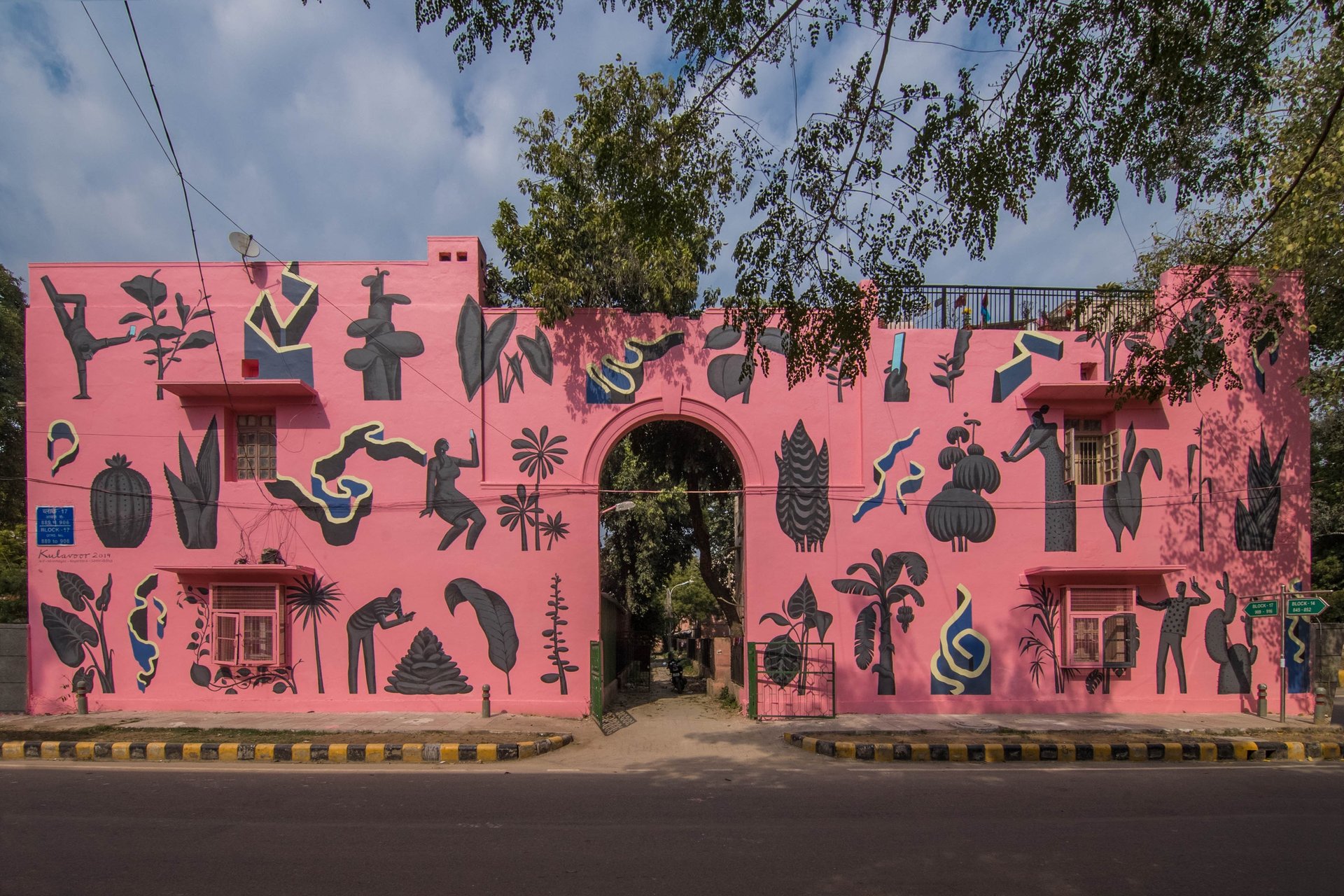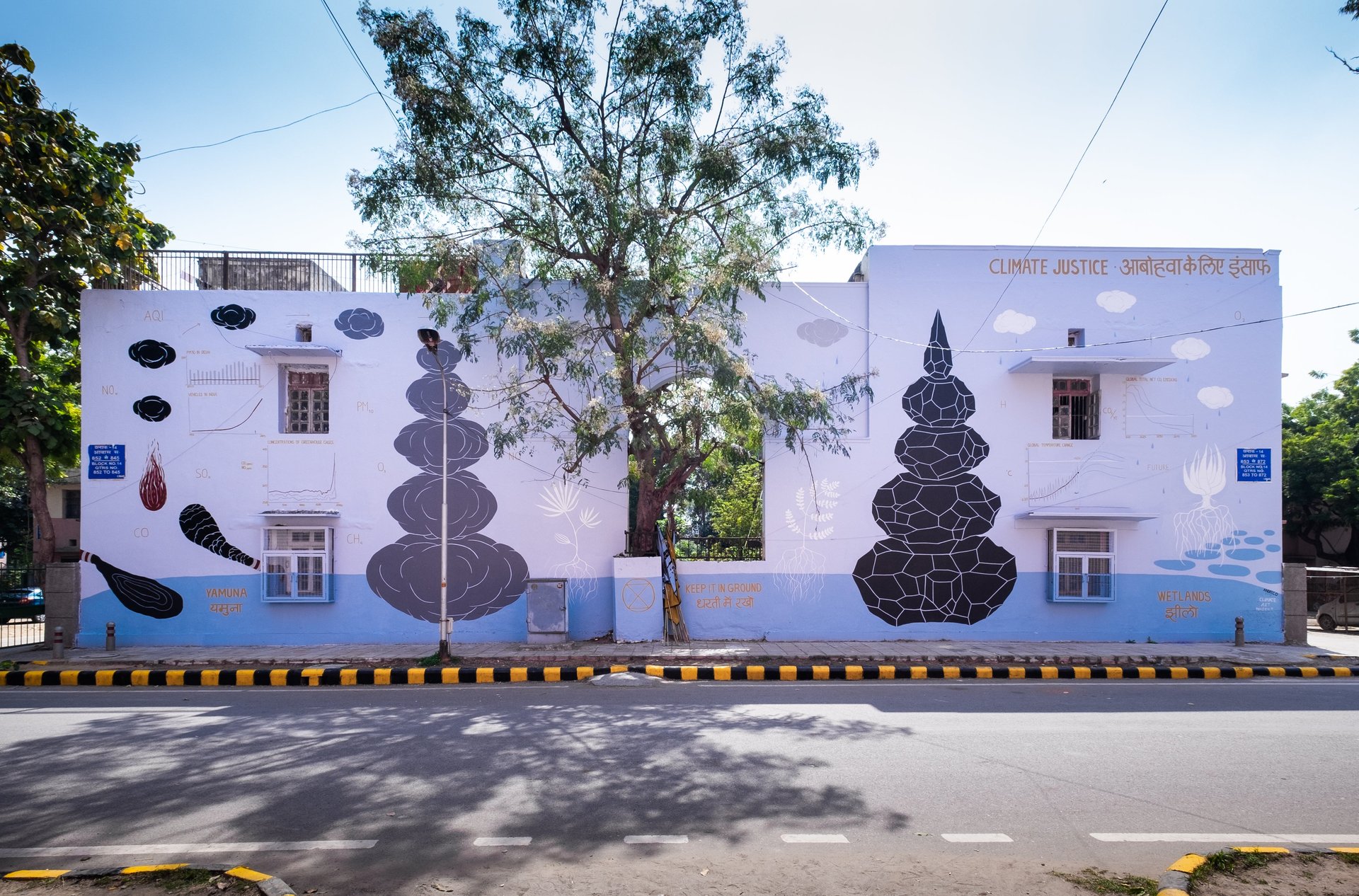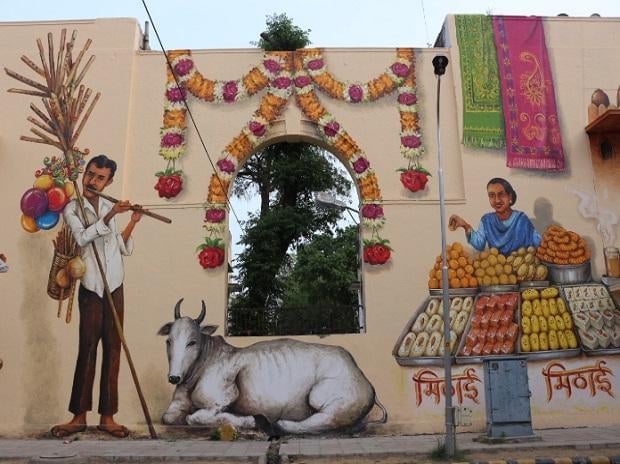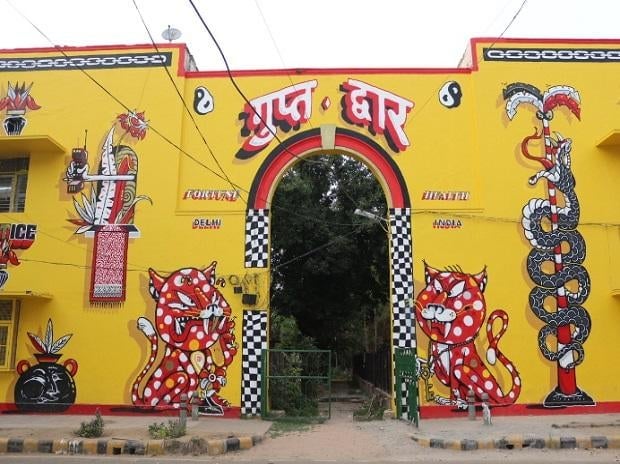Celebrating street art in south Delhi’s Lodhi Colony, India’s first public art district
Walls in the quiet, leafy lanes of Lodhi Colony have suddenly come alive. After sequestering private compounds from each other—and from non-residents—for years, they are now bringing people in Delhi and its suburbs together in a strange, colourful way.


Walls in the quiet, leafy lanes of Lodhi Colony have suddenly come alive. After sequestering private compounds from each other—and from non-residents—for years, they are now bringing people in Delhi and its suburbs together in a strange, colourful way.
“We have come here all the way from Ghaziabad,” said a gleaming Adyasha Mohanty, referring to the satellite city she lives in, 35 kilometres northeast of the Indian capital. “We are here to take pictures and put some colour in our life. We will post these pictures on Instagram,” she said, posing for a selfie with her friend Anusha Dash, on a sunny March evening, against a newly-painted, pink wall. It displays colourful flowers and other motifs, besides two delicate, feminine hands, holding a welcoming rose.
“The walls look so beautiful,” said the two 20-something-year-old law students. The Ghaziabad duo is among the scores of such visitors Lodhi Colony has been hosting every day since a non-profit organisation gave the South Delhi neighbourhood an aesthetic makeover.
The first art work on Lodhi Colony walls was done in 2015. It’s been on since then and in January 2019 the St+Art India Foundation got a bunch of top-notch Indian and international artists to work on more paintings. By March, the old, drab palisades were brimming with life as mythological, geometric, abstract, and social themes took multiple hues.
One wall in Block 17 showcases digital slavery, the trappings of living in a 24×7 connected world of gadgets. The work by Mumbai-based Sameer Kulavoor, ironically, depicts people clicking selfies—human figures bent backwards. The focus has shifted from living the moment to collecting images, it is trying to say.
The one in Block 16, painted yellow and with an arched doorway, has gupt dwar (secret door) written over it. It is splashed with other terms, too, like “Torture Delhi,” “Justice and equality,” “Health,” and “Fortune.” An image of a squatting cow and a kalash (urn) complete the picture. The mural “Letters for Lodhi” has been created by Singapore-based artists Yok and Sheryo. They drew inspiration from old Indian matchboxes known for their colourful pictures and messages promoting socio-religious causes.
Another Singapore-based artist, Sam Lo, has put together a wall with a theme, “Cause & Effect” in Block 13. Sparrows, whose fates are tied to each other, don the walls. The birds are trying to free themselves by dealing with their shadow selves and their environment. The mural encourages people to examine their relationships with fellow human beings and their surroundings.
Another captivating painted wall in the same block borrows from everyday scenes of street life depicting people passing by and vendors selling their wares. The mural has been put up by the Singaporean artist Yip Yew Chong.
St+Art India Foundation began with two walls in Lodhi Colony in 2015 and in 2019 alone, it has covered up to 22 in the government-owned space. Its aim is to make art accessible to all. The organisation is backed in its endeavour by Asian Paints, one of India’s largest commercial paint makers.



Some of the international artists who are a part of the project are Brandon Tay (Singapore), Georgia Hill (Australia), Yoh Nagao (Japan), and Daan Botlek (Netherlands). Apart from Kulavoor, Hanif Kureshi, Sajid Wajid, and Shilo Shiv Suleman are the Indian talents in the project.
Why art?
“Art in public spaces is a tool to empower people and enable them to think beyond borders. It opens up dialogue between people,” Guilia Ambrogi, the co-founder and curator of St+Art India Foundation, told Quartz. “We don’t think about public spaces since they do not belong to anyone. Look around, we see citizens throwing garbage and damaging property.”
Art is also a powerful tool to bring about much-needed social change by encouraging people to think aloud, debate things in open, and question established norms, Ambrogi added.
“Public art is catching up in India as more and more artists are coming forward to experiment. Painting walls and creating art work on the top of buildings is a reversible process which helps beautify city landscape,” said conservation artist Ratish Nanda.
The last British creation
Lodhi Colony was chosen for its big and even walls, its proximity to a Delhi Metro line (easy connectivity), and its pedestrian-friendly streets. Most apartments here being government-owned, getting permissions and clearances to carry out art work was easier, too. It is the last residential area built under British rule in the 1940s to house government employees.
Its walls serve as an open museum, providing easy access to art to the public at large which otherwise is confined to art galleries and closed spaces, said Priyanshi Saxena, a Delhi-based independent art advisor and curator.
In fact, there are some pecuniary gains, too. Small shopkeepers and vendors, for instance, have seen incomes go up significantly since art connoisseurs as well as casual visitors—students, young artists, and foreigners—began trickling in to Lodhi Colony.
“Demand for my food has gone up. Earlier, I used to make Rs300 ($4.32) per day; now my earnings have gone up to Rs500 per day,” said Pappu Yadav who sells chole kulche (green peas and flatbread) in the area.
The good and bad
Putting together a project as mammoth as the one in Lodhi Colony Walls was no easy task.
Tying up the logistics was the first big challenge. “It has been tough to manage artists, their support staff, rope in volunteers and then arrange and coordinate for basic things like food, water, accommodation etc. We had to arrange for equipment like ladder, cranes and lighting for artists to work in the night. Arranging all these things has been mind-boggling,” Ambrogi said.
It was also a huge effort to get all the artists—25 of them—to take out time for the project.
Not everything is hunky dory now, though. The continuous stream of visitors to Lodhi Colony has irked some residents, especially in matters of privacy and safety.
An elderly resident of Block 17 is annoyed at people treating easy access to art as their fundamental right.
Requesting not be identified, the resident complained that sometimes youngsters come in to click selfies against the walls at even 5:30am, riding fancy bikes and honking incessantly. This person has lent the boundary wall of his residence to Italian artist Andreco, who has depicted the impact of pollution on the River Yamuna that flows through Delhi.
A retired employee from the consumer major Hindustan Unilever, whose wife, a government officer, was allotted an apartment here, rued that most visitors don’t even understand the meaning of the artwork. He himself often explains the significance of the illustration, sometimes to no effect.
Perhaps a mural on etiquette for visitors could help. After all, Lodhi Colony’s walls are Delhi’s new message boards.